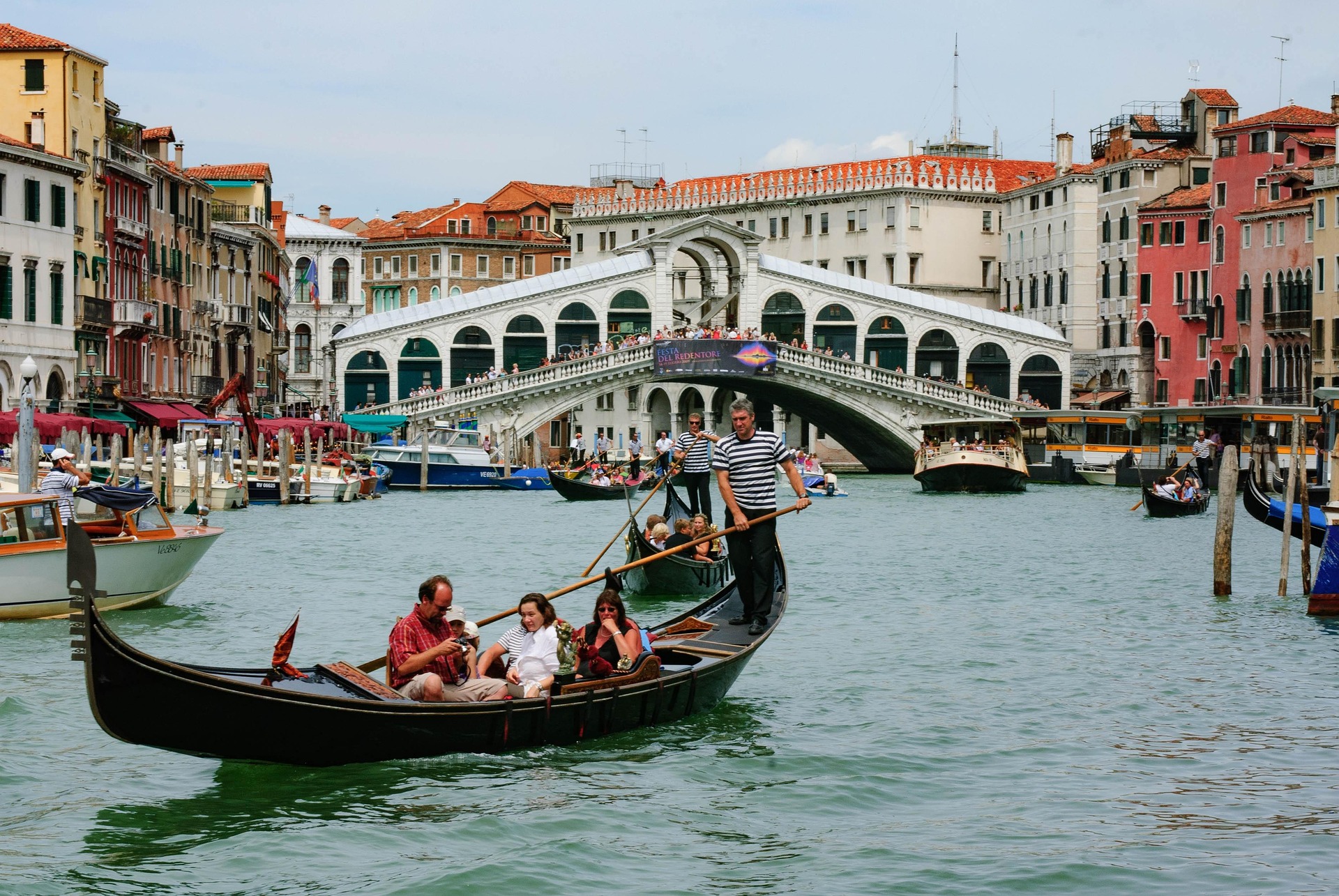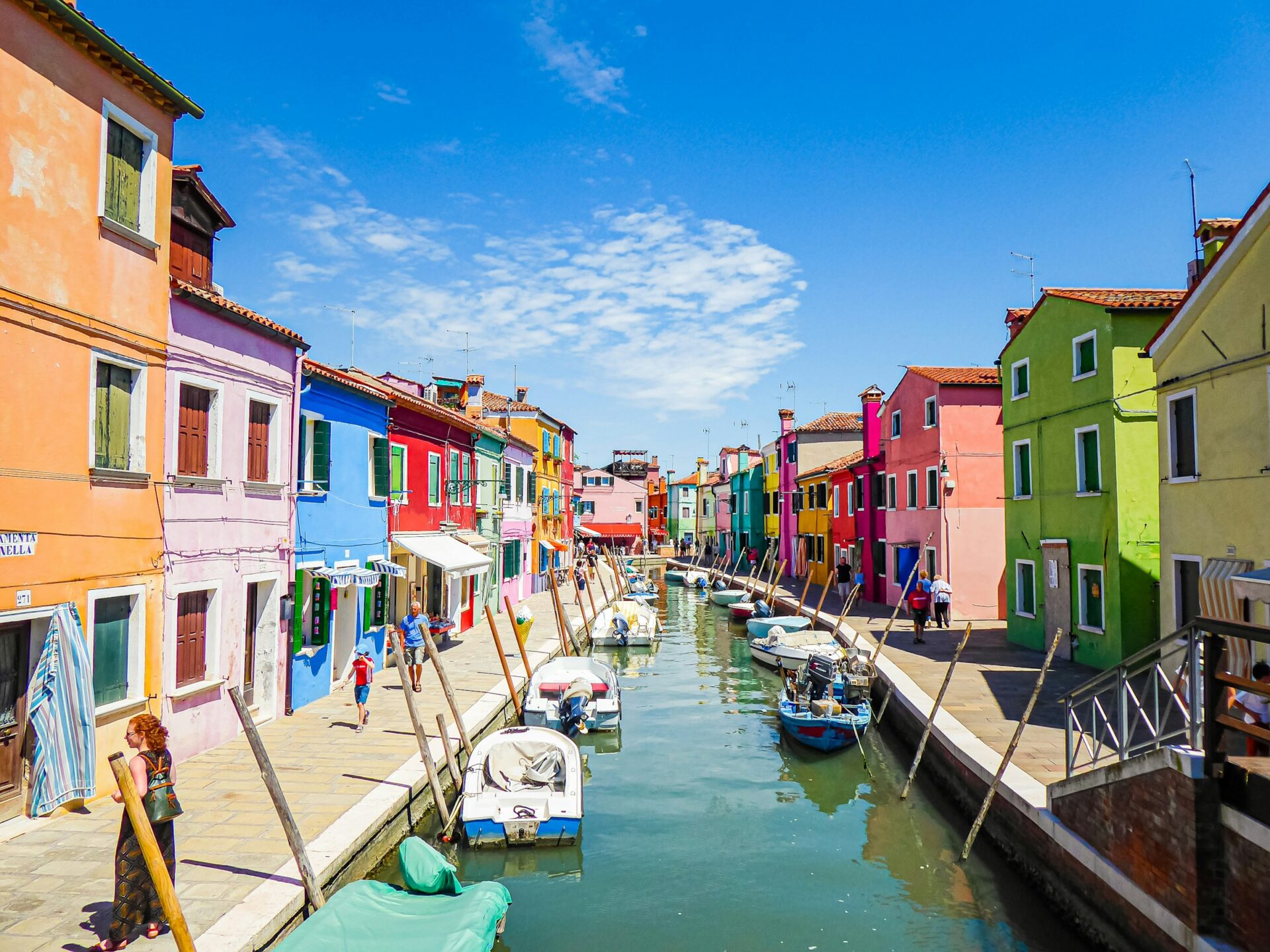Venice transforms in the early morning light, revealing a side most tourists never see. Standing on the Rialto Bridge at sunrise, I watched the city slowly wake beneath a sky painted with soft pinks and oranges, without another soul in sight.
The iconic Rialto Bridge offers a magical experience at sunrise. You can enjoy breathtaking views without fighting through crowds that fill the area later in the day.

What makes this moment so special isn’t just the golden light reflecting off the Grand Canal or the historic architecture glowing in the morning sun. It’s the rare silence that blankets Venice, a city typically bustling with visitors. As a photographer, I’ve found this early morning ritual provides the perfect opportunity to capture authentic images without strangers wandering into my frame.
My first sunrise at Rialto changed how I experience Venice forever. The gentle lapping of water against boats, the distant calls of seagulls, and the soft footsteps of locals beginning their day create an atmosphere that feels intimate and personal. This experience connects you to Venice’s true essence in a way that afternoon visits simply can’t match.
The Allure of Venice
Venice captivates visitors with its unique blend of history, art, and waterways unlike anywhere else in the world. When I first stepped foot in this floating city, I was immediately transported to another time and place where cars don’t exist and water taxis rule the day.
History Unveiled
Venice’s story began in the 5th century when mainland residents fled to the marshy islands to escape barbarian invasions. What amazes me most is how they transformed these muddy lagoon islands into a maritime powerhouse. By the 13th century, Venice had become one of the wealthiest cities in Europe through trade with the East.
Walking through Venice’s narrow streets, I feel the weight of history in every stone. The Republic of Venice ruled as an independent state for over 1,000 years until Napoleon conquered it in 1797. This rich past explains the city’s magnificent architecture – a blend of Byzantine, Gothic, and Renaissance influences.
The Rialto area was the commercial heart of Venice, with its famous bridge serving as the only crossing of the Grand Canal for nearly 300 years.
Venetian Vistas and Gondolas
Nothing symbolizes Venice quite like its iconic gondolas gliding silently along emerald canals. These hand-crafted boats have barely changed in design for centuries. I love watching skilled gondoliers navigate narrow waterways with grace and precision.

The Grand Canal forms Venice’s main aquatic thoroughfare, curving through the city in an S-shape lined with colorful palazzos. From the Rialto Bridge, you can watch water buses, taxis, and private boats creating a water traffic ballet against a backdrop of Renaissance buildings.
Venice’s unique vistas combine water, sky, and architecture in perfect harmony. Each tiny bridge offers a new perspective, from hidden canals framed by laundry lines to wide lagoon views where water meets sky.
Morning light transforms the city, turning weathered facades into glowing canvases of amber and gold.
Rialto Bridge Through the Ages
The Rialto Bridge stands as a testament to Venetian engineering and artistic vision, evolving from humble beginnings to become the iconic structure we admire today.
Architectural Marvels
The bridge I see today isn’t the original structure. Venice’s first Rialto crossing was a simple pontoon bridge built in 1180. After several wooden versions collapsed (one even during a crowd gathering!), officials decided something more permanent was needed.
The current stone bridge was designed by Antonio da Ponte and completed in 1591. Its bold single marble arch spans 24 feet above the Grand Canal and rests on approximately 12,000 wooden pilings that have supported it for over 400 years.

Image Source: Flickr
What amazes me most is how the Renaissance-era engineers created such a durable structure. The distinctive hump shape wasn’t just for aesthetics – it allowed sailing ships to pass underneath while providing space for shops along the bridge.
These 24 small shops still line both sides of the bridge, selling everything from fine jewelry to tourist souvenirs.
Tales of the Grand Canal
The Rialto area has always been Venice’s commercial heart. Long before the stunning stone bridge existed, merchants from around the world gathered here to trade exotic goods.
When I stand on the bridge at sunrise, I imagine the bustling markets that once filled the area. The name “Rialto” comes from “rivo alto” (high bank), the highest point on the islands where traders felt safest conducting business.
Shakespeare immortalized the bridge in “The Merchant of Venice,” where characters discuss business deals “upon the Rialto.”

Image Source: Rawpixel
Unlike many bridges in Verona or other Italian cities that served primarily as crossings, Rialto became a commercial center itself. It connects the districts of San Marco and San Polo, making it crucial to Venice’s daily life.
During major festivals, the bridge becomes especially significant. I’ve seen it draped in lights during Carnival, transforming this architectural wonder into something truly magical.
Photography Tips for Sunrise Shoots
Early morning photography requires specific techniques to capture the magical light and empty scenes. I’ve found that mastering exposure settings and understanding natural light can transform ordinary sunrise photos into stunning memories.
Mastering the Long Exposure Technique
Long exposure is perfect for capturing the serene morning atmosphere at Rialto Bridge. I recommend using a sturdy tripod – it’s absolutely essential when working with slow shutter speeds.
Set your camera to manual mode and aim for shutter speeds between 1-5 seconds to create that silky effect on the canal water.
Use a remote shutter release or your camera’s timer function to avoid camera shake. I typically set my aperture around f/11 for good depth of field while keeping ISO low (100-200) for clean images.
A neutral density filter can be incredibly helpful when the sun starts to rise, allowing longer exposures even as light increases. This technique works beautifully to smooth out ripples in the canal and create a dreamy atmosphere beneath Venice’s most famous bridge.

Navigating Natural Lighting
The golden hour just before and after sunrise creates magical lighting conditions around Rialto. I’ve learned to arrive about 30-45 minutes before actual sunrise to catch the beautiful blue hour transitions.
Keep an eye on the sky for vibrant clouds, which can add dramatic elements to your composition. Clouds often reflect gorgeous pink and orange hues that complement Venice’s warm-toned buildings perfectly.
Bracket your exposures by taking multiple shots at different settings. The extreme contrast between bright sky and darker buildings can be challenging, so I usually take at least three exposures to merge later.
Don’t pack up right after the sun appears! The light continues to change and create beautiful effects as it illuminates the bridge’s stone details. Some of my favorite shots happened 20 minutes after sunrise when warm light began hitting the buildings along the Grand Canal.
When To Visit for the Perfect Shot
Timing is everything when capturing Rialto Bridge without crowds. The best photos combine great light with empty walkways, and knowing when to visit can make all the difference.
Understanding Venice’s Seasons
Venice’s tourism fluctuates dramatically throughout the year. I’ve found April and November offer the best balance between decent weather and manageable crowds.
Spring brings pleasant temperatures and longer daylight hours, perfect for photography.
Summer (June-August) is absolutely packed with tourists. The bridge becomes nearly impossible to photograph without strangers in your frame.
Winter offers the fewest visitors, especially January and February. While it can be chilly and occasionally foggy, these conditions create moody, atmospheric shots that photographer Andrew Soundarajan describes as “hauntingly beautiful.”
The Acqua Alta (high water) season in late fall can also create unique reflection opportunities, though it requires waterproof gear and patience.

Image Source: Flickr
Catching the Sunrise
Sunrise is magical at Rialto Bridge. I’ve discovered that arriving 30-45 minutes before the sun appears gives me time to set up my equipment and find the perfect angle.
During summer, this means a very early alarm (around 4:30 AM), while winter allows a more reasonable 6:00 AM start.
The golden light at dawn illuminates the canal buildings with a warm glow that can’t be replicated at any other time. Plus, you’ll likely only share the spot with a few dedicated photographers and early-working locals.
After capturing the sunrise, I often enjoy a peaceful coffee at a nearby café before the crowds arrive around 9:00 AM. This morning routine has given me my best Venice photos.
Venice Beyond the Rialto
While Rialto Bridge offers magical sunrise views, Venice has so much more to discover. The city’s less touristy neighborhoods and hidden corners reveal a more authentic side of this floating wonderland.
Exploring Cannaregio and Dorsoduro
I love wandering through Cannaregio in the early morning. This neighborhood feels worlds away from San Marco’s crowds. Jewish Ghetto’s quiet squares and humble eateries offer a glimpse into local life. The morning light here creates perfect photo opportunities without fighting for space.

Dorsoduro captured my heart with its artistic vibe. The Accademia Bridge provides Grand Canal views that rival Rialto’s but with breathing room. I often stop at tiny gelato shops that locals frequent – the authentic flavors are incredible!
Morning walks along Dorsoduro’s quiet canals let me peek into workshops where artisans craft traditional masks and glass. The morning light reflecting off the water creates a peaceful atmosphere that reminds me why Venice is special.
Venice’s Lesser-Known Gems
The islands beyond central Venice deserve your attention. Burano’s rainbow-colored houses make for stunning photos, especially in soft morning light.

I recommend taking the first vaporetto out to beat day-trippers.
Torcello island feels like stepping back in time. Its ancient cathedral and country landscapes create a striking contrast to bustling Venice.
Pack a small picnic and find a quiet spot along the canals.
Hidden bookshops and tiny bacari (wine bars) offer authentic experiences. I discovered a family-run bacaro near a small bridge where locals gather for spritz and cicchetti (Venetian tapas).
For photography enthusiasts, the small canals connecting lesser districts provide frames that capture Venice’s soul without the postcard clichés.
Morning fog often creates a magical atmosphere that transforms ordinary scenes into something special.

Image Source: Tripadvisor

